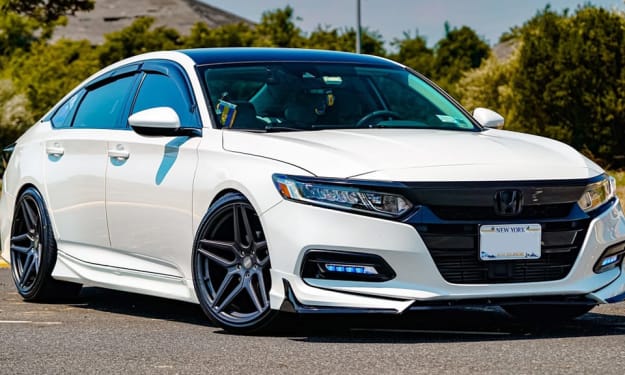Refuelling Electric Cars - An Alternative Approach?
Thinking outside the box gave me an idea...

The anger trigger for writing
I just got excited — angry actually — by a BBC story I just read. So now I’m writing. Why?
Well, I’m a big motor-racing fan, not a buff exactly, but I’ve followed Formula 1 since I was a boy (I even rebuilt an engine in my college room).
Did you ever watch cars F1 cars catch fire when the refuelling process went wrong? Nasty. The racing authorities got rid of that. Understandably.
Now the racing teams just change tyres (/tires), body parts and other sundry items several times during a race. Except the driver in F1. He/she can be change too in other formats such as Le Mans.
But no refuelling.
F1 has made tremendous strides in driving automobile technology, and now the machines are hybrid beasts with advanced battery technology and energy recovery systems.
The FIA (motor sport’s governing body) even set up an electric car formula — Formula E — which is gaining a lot of traction.
I love electric. I was an early adopter — in a previous life I ran a fleet of electric milk floats for many years. And no, I don’t mean floats that carried electric milk.

The batteries then were lead-acid and each float carried about 2 tons of them. I think the next biggest size was in submarines. Acceleration was good. Top speed? That was just sour. I think submarines are faster.
What really irked me?
I’ll quote from the BBC story:
“In Formula One, a race distance is about 200 miles (305km). Without recharging, with the performance of the cars, electricity will not allow that,” he says.
“Maybe in 20 years, 30 years, I don’t know. But at the moment it would be simply impossible.”
So says the outgoing president of the sport’s governing body, the International Automobile Federation (FIA), Jean Todt.
“Explains”?
No he doesn’t. He expresses an opinion. Stupidly.
If you’re interested in the weight and fuel stats of F1 cars then check this article:
That’s all very well, but why don’t they just refuel electric cars during a race?
Yeh, plug them in and wait 2 hours for a re-charge.
Boy what a race that was.
What a dork…
…you may say me, I say him. Consider this:
F1 cars with interchangeable battery packs.
Battery tech is improving almost daily in leaps and bounds. The batteries in F1 cars are not huge — as Todt says they only have to travel 200 miles.
Here’s what to do:
- Make the batteries smaller
- Make them with lower capacity
- Standardise them across racing teams — that’s already done with tyres (Pirelli at the moment) — and boy, do they wear out quickly
- Change the batteries during a race, multiple times and add to the spectator interest — we all know the fascination that tyre strategy has brought to F1 racing.
That approach destroys the energy math in the article I linked above.
And wrecks Todt’s opinion. IMO.
And come to that…
…if we acted now we could adopt this approach for the general electric car fleet.
It would require some degree of standardisation across manufacturers. It would only take two or three big auto manufacturers to agree.
So, I’m driving from London to York. I need to make one stop for a change of battery, maybe. Drive onto a ramp with a robotic battery changer underneath. What range would you like today sir?
10 minutes for a battery change, and not 4 hours to recharge.
Yes but we’d need a lot of batteries.
We wouldn’t have to install a huge network of charging points. Charging would be centralised at local ‘gas’ stations where we go for a swap. We’d need on average maybe 3–4 ‘battery boxes’ for every car on the road.
Yes but costs would go up.
Really? What about economies of scale? Standardisation would enable competition.
Yes but battery technology is changing all the time.
As battery tech improves (as, for example, with ONE — they just doubled battery energy density), then the battery form factor need not change, just increase the capacity.
Hell, this approach may even have the benefit of accommodating alternative power sources such as fuel cells. Did you ever hear of Moore’s law in computing? Want to upgrade your PC? Just plug in the latest processor card (but don’t mention Windows…)
Stop ‘yes butting’ me! Just get on with it.
Start with F1 racecars first, the sooner the better. It will increase entertainment value and we all know how important that is in F1, with rubber rule books and live on-air rule-bending arguments.
In the wider context, governments could make this happen.
And a later add-on, refuelling this story, so to speak…yes, somebody listened…it’s being researched for regular vehicles:
***
Canonical: This story was first published in Medium on 24 January 2022 [edited]
About the Creator
James Marinero
I live on a boat and write as I sail slowly around the world. Follow me for a varied story diet: true stories, humor, tech, AI, travel, geopolitics and more. I also write techno thrillers, with six to my name. More of my stories on Medium






Comments
There are no comments for this story
Be the first to respond and start the conversation.